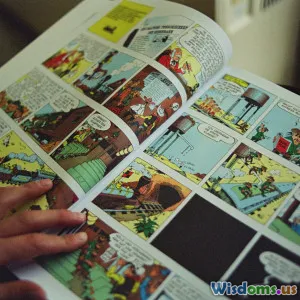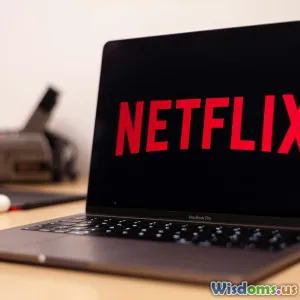
Case Study: The Witcher’s Impact on Future Game to TV Adaptations
8 min read Explore how The Witcher series transformed game-to-TV adaptations, setting new storytelling and production benchmarks. (0 Reviews)
Case Study: The Witcher’s Impact on Future Game to TV Adaptations
Introduction
When Netflix released The Witcher in December 2019, it was more than just another fantasy series debut—it was a seismic moment for adaptations of video games to television. Historically, game-to-screen adaptations faced mixed receptions, often criticized for shallow storytelling and lackluster production. The Witcher, based on CD Projekt Red’s acclaimed video game series derived from Andrzej Sapkowski’s novels, defied these expectations and showcased the potential to transform how such adaptations are approached. This article will analyze in-depth how The Witcher set new standards and influenced the future of this emerging genre.
The Context: Game to TV Adaptations Before The Witcher
Before The Witcher, many studios grappled with capturing the essence of video games in long-form television or films. While games like Castlevania (2017) achieved critical acclaim as animated adaptations, live-action efforts often stumbled:
- Titles such as Assassin’s Creed (2016) received mixed reviews and struggled to connect with both gamers and traditional audiences.
- Critics pointed to narrative condensation and failure to translate gameplay atmosphere to narrative drama.
The challenge was clear: How to retain the rich, immersive storytelling and character depth gamers experience over dozens of gameplay hours into a concise TV format?
Narrative Depth: Melding Multiple Sources for Rich Storytelling
A significant factor behind The Witcher’s success was its rich narrative foundation, drawing directly not only from the games but also from Sapkowski’s original literary works.
Embracing Complex Timelines and Character Arcs
The Witcher employed a complex, nonlinear timeline structure that initially confused some viewers but ultimately added sophistication uncommon in game adaptations. This narrative risk paid off because:
- It mirrored the layered storytelling gamers value in titles like The Witcher 3: Wild Hunt.
- It allowed deeper character exploration, giving Geralt of Rivia and other characters emotional gravity beyond action scenes.
Staying Faithful Yet Adaptive
The series retained many popular game elements — like intense monster battles and moral ambiguity — but wasn't constrained by game mechanics. Screenwriter Lauren Schmidt Hissrich emphasized adapting the story for TV audiences, stating in interviews that "success is not just in replicating the game, but capturing the spirit and thematic resonance."
Production Quality: A Benchmark for Future Adaptations
Netflix spared no expense to bring The Witcher to life, evident in:
- Elaborate set designs capturing both the grim and magical elements of the Continent.
- Intricately choreographed combat scenes blending diverse fighting styles and monster mythology.
- Strong visual effects integrating realistic creatures and environments.
The investment yielded high-quality cinematography and immersive worldbuilding, raising industry standards.
For instance, the battle choreography choreographer, Tom Kistruck, drew on both historical fencing and fantasy elements, creating fights that were dynamic yet believable.
The Audience and Fan Reception: Turning Skeptics Into Believers
The Witcher shattered subscription and viewership records for Netflix’s original content upon release, signaling broad appeal beyond just fans of the games or books:
- Nielsen ratings reported over 76 million households streamed the series in the first month, rivaling other major fantasy shows like Game of Thrones.
- Social media buzz turned actors like Henry Cavill into cult icons among gamers and mainstream audiences alike.
Moreover, criticism about pacing and mature content for some episodes sparked conversation, but ultimately engagement was high, illustrating robust interest in mature, well-crafted fantasy inspired by games.
Influence on Future Game-to-TV Adaptations
In the wake of The Witcher’s success, industry stakeholders took note. Several concrete impacts can be identified:
Increased Investment and Confidence
Leading streaming platforms and studios committed to future series based on high-profile games such as:
- Halo (Paramount+), which elevated production budgets beyond expectations, with meticulous attention to story arcs.
- Amazon’s plans for a Fallout series aiming to mirror its intricate lore and player-driven narrative styles.
Elevated Storytelling Expectations
Producers now prioritize:
- Story arcs that go beyond rote game plotlines.
- Strong character development as pivotal to audience retention.
Veteran showrunners aim to create series that those unfamiliar with games can appreciate while rewarding hardcore fans — a balance pioneered effectively by The Witcher.
Collaborative Development Between Game Creators and Showrunners
An important lesson was to involve original creators deeply. CD Projekt Red’s cooperation with Netflix strengthened brand authenticity.
Future projects increasingly engage game developers as consultants or co-producers to maintain fidelity and fan trust.
Challenges That Remain
While The Witcher set the bar high, adaptation challenges persist:
- Balancing fidelity with accessible storytelling remains complex.
- Avoiding pitfalls of oversimplifying source material without alienating non-gaming viewers is an ongoing creative negotiation.
Some adaptations have faltered when relying too heavily on gameplay elements without strong narrative foundations.
Conclusion: A Gateway for Future Game to TV Successes
The Witcher exemplifies how video game adaptations can transcend stereotypes and become acclaimed television phenomena. By blending faithful storytelling rooted in rich source material, innovative narrative structures, and high production values, the series demonstrated a viable blueprint for translating interactive worlds to serialized TV drama.
Its impact encourages studios to invest boldly in game adaptations and highlights the importance of respecting the narrative complexity behind beloved games. As the genre grows and matures, fans and creators alike have much to anticipate—and learn—from this trailblazing adaptation.
Ultimately, The Witcher did not just bring a beloved world to screens; it redefined expectations and opened doors for future storytelling innovations bridging games and television.
References
- Netflix’s official ratings reports (2020).
- Lauren Schmidt Hissrich interviews with The Hollywood Reporter (2019).
- Tom Kistruck’s commentary on fight choreography, The Witcher behind-the-scenes (2020).
- Variety article on game adaptations post-The Witcher success (2021).
- CD Projekt Red statements on collaboration with Netflix (2019).
Rate the Post
User Reviews
Popular Posts


















